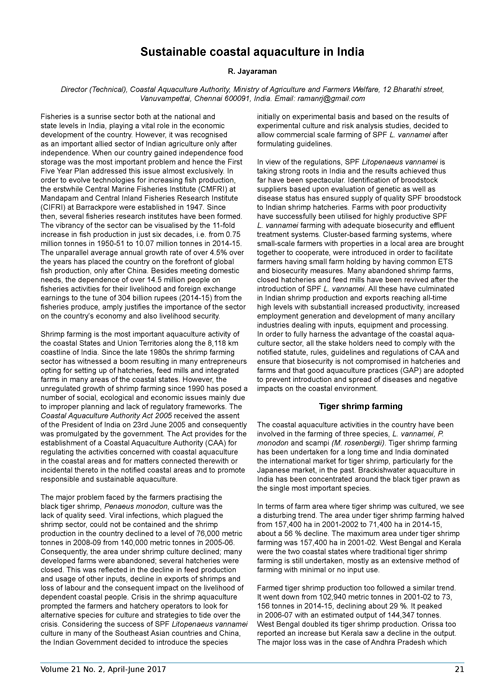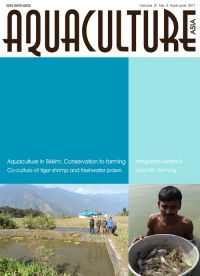Sustainable coastal aquaculture in India
7 June 2017 | R. Jayaraman | 1883 Downloads | .pdf | 149.41 KB | Shrimp, India, Governance and Policy
Coastal aquaculture in India was historically focussed mainly on tiger shrimp farming (Penaeus monodon) but production issues and disease led to the introduction of SPF Pacific white shrimp (L. vannamei) in 2009.
A robust technical and legal framework was established by the Coastal Aquaculture Authority with components including quarantine, registration, monitoring and regulation of all coastal aquaculture activities including farms and hatcheries, registration of inputs, issue of technical guidelines and culling of imported SPF broodstock after six months of use.
These measures have helped to ensure that coastal aquaculture is conducted on a sustainable basis. Consequently, farmed Pacific shrimp output rose from 1,731 tonnes in 2009-2010 to 353,413 tonnes in 2014-2015.
Creative Commons Attribution.

